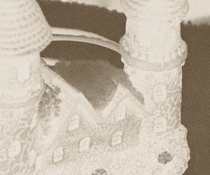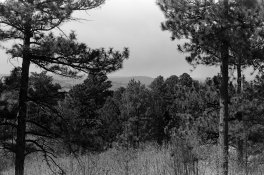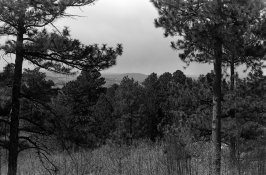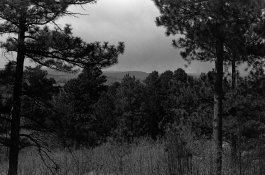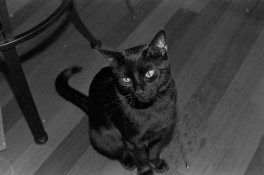So as much as I love EXG1, a glycin-only film developer that produces slightly raised contrast and rodinal-like grain.. One thing has irked me, it requires a second part to the developer. I decided to try to make an "EXG2" that uses phenidone and no part B instead. The exact formulation is still a prototype, so I'll just provide what I did as a working solution:
* 10ml glycin in (clear 99% grade) triethanolamine (TEA), 10% solution (ie, 10g in 100ml)
* 2ml of phenidone in propylene glycol, 1% solution
* 8ml of additional propylene glycol (used to thin out the final stock solution formulation)
* top to 500ml with water
* Final pH ~9.25, stable (after processing film pH remained the same)
The results are somewhat low density, that's the only reason I'm not done with the formulation. However, they were interesting enough that I wanted to share them. The films tested were Arista.EDU Ultra 100, otherwise known as Foma 100, and FP4+. I took some bracket shots ranging from 25 to 400 ISO on each film and developed it for 10m at 75F. To the bare eye, the ISO 100, 200, and 400 are nearly indistinguishable, but the ISO 50 and 25 become more obvious due to a bit more density. The density was of a brown tint with no base fog present, almost as if they were stained though I see no hard evidence of staining. If there was any staining though it would've been preserved. I used TF-4 fixer and a water stop bath. The results once scanned revealed rodinal like grain and sharpness, some very minor edge effects, and extremely compensated highlights, with the brackets shot at slower speed having a general smoothing of highlights with much lower contrast in highlight detail. Notice the difference in the texture of the snow between ISO 50 and ISO 400. Overall shadow detail was good even in the higher speed results, but the thin density would make it difficult to print. Will try using 50% more time in future tests, and maybe adding 1-2ml more phenidone 1%. The final stock solution formulation is intended to be the "last forever" type that contains no water. Results attached
* 10ml glycin in (clear 99% grade) triethanolamine (TEA), 10% solution (ie, 10g in 100ml)
* 2ml of phenidone in propylene glycol, 1% solution
* 8ml of additional propylene glycol (used to thin out the final stock solution formulation)
* top to 500ml with water
* Final pH ~9.25, stable (after processing film pH remained the same)
The results are somewhat low density, that's the only reason I'm not done with the formulation. However, they were interesting enough that I wanted to share them. The films tested were Arista.EDU Ultra 100, otherwise known as Foma 100, and FP4+. I took some bracket shots ranging from 25 to 400 ISO on each film and developed it for 10m at 75F. To the bare eye, the ISO 100, 200, and 400 are nearly indistinguishable, but the ISO 50 and 25 become more obvious due to a bit more density. The density was of a brown tint with no base fog present, almost as if they were stained though I see no hard evidence of staining. If there was any staining though it would've been preserved. I used TF-4 fixer and a water stop bath. The results once scanned revealed rodinal like grain and sharpness, some very minor edge effects, and extremely compensated highlights, with the brackets shot at slower speed having a general smoothing of highlights with much lower contrast in highlight detail. Notice the difference in the texture of the snow between ISO 50 and ISO 400. Overall shadow detail was good even in the higher speed results, but the thin density would make it difficult to print. Will try using 50% more time in future tests, and maybe adding 1-2ml more phenidone 1%. The final stock solution formulation is intended to be the "last forever" type that contains no water. Results attached
Attachments
-
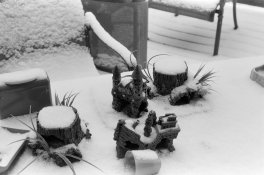 arista 100 @ 50.jpg754.8 KB · Views: 133
arista 100 @ 50.jpg754.8 KB · Views: 133 -
 arista 100 @ 100.jpg808.7 KB · Views: 134
arista 100 @ 100.jpg808.7 KB · Views: 134 -
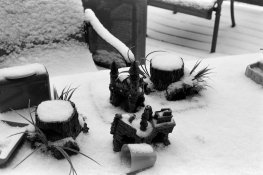 arista 100 @ 200.jpg885 KB · Views: 109
arista 100 @ 200.jpg885 KB · Views: 109 -
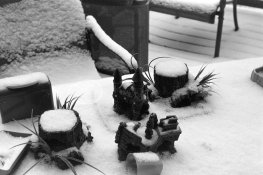 arista 100 @ 400.jpg927.7 KB · Views: 109
arista 100 @ 400.jpg927.7 KB · Views: 109 -
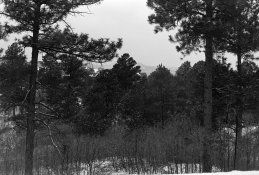 arista 100 @ 100 landscape.jpg1.3 MB · Views: 131
arista 100 @ 100 landscape.jpg1.3 MB · Views: 131 -
 fp4+ @ 50.jpg789.9 KB · Views: 129
fp4+ @ 50.jpg789.9 KB · Views: 129 -
 fp4 @ 100.jpg818.8 KB · Views: 131
fp4 @ 100.jpg818.8 KB · Views: 131 -
 fp4+ @ 200.jpg893.1 KB · Views: 126
fp4+ @ 200.jpg893.1 KB · Views: 126 -
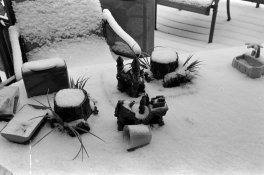 fp4+ @ 400.jpg914.7 KB · Views: 109
fp4+ @ 400.jpg914.7 KB · Views: 109 -
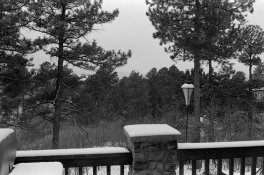 fp4+ @ 100 landscape.jpg1.2 MB · Views: 117
fp4+ @ 100 landscape.jpg1.2 MB · Views: 117


